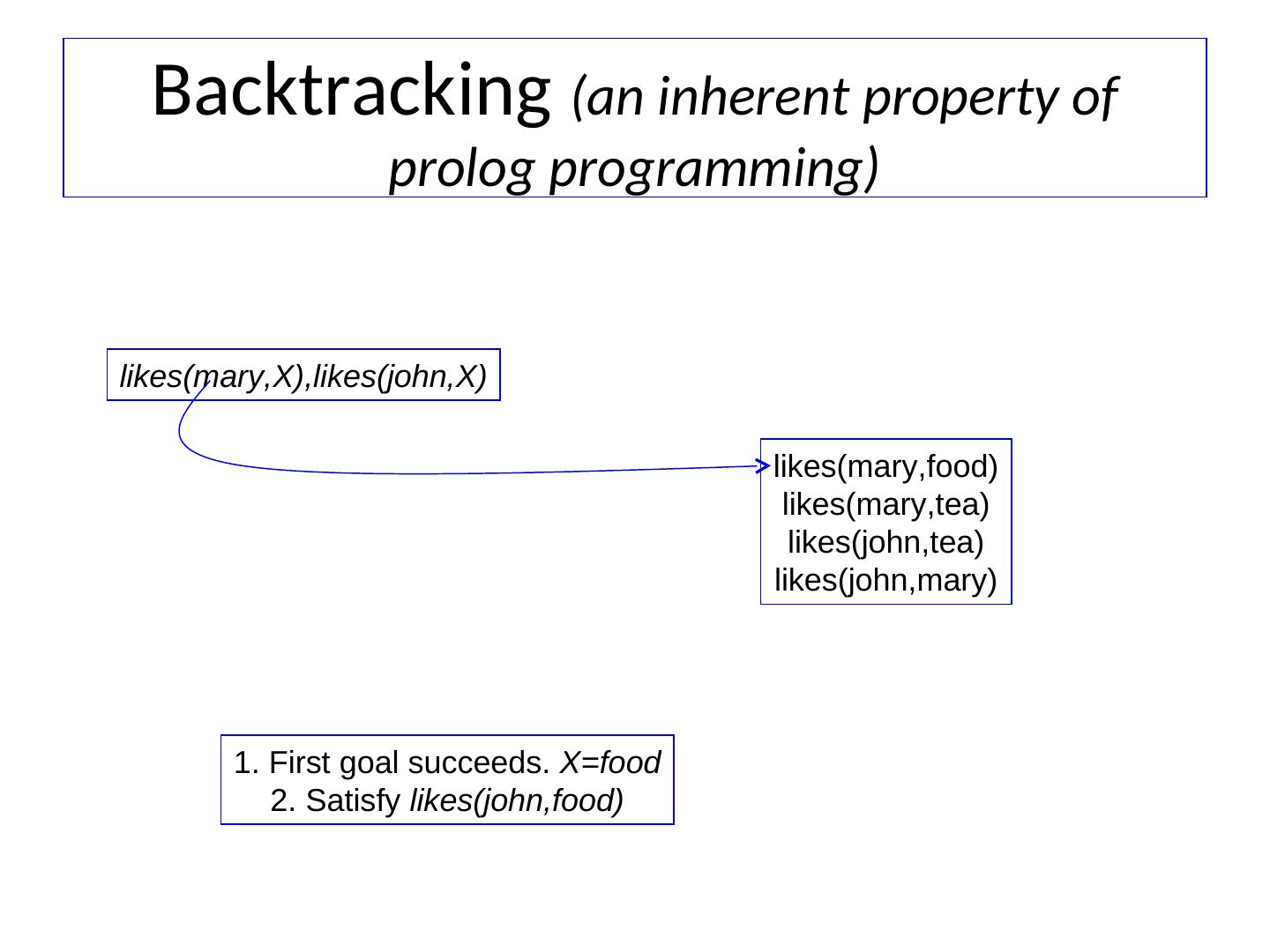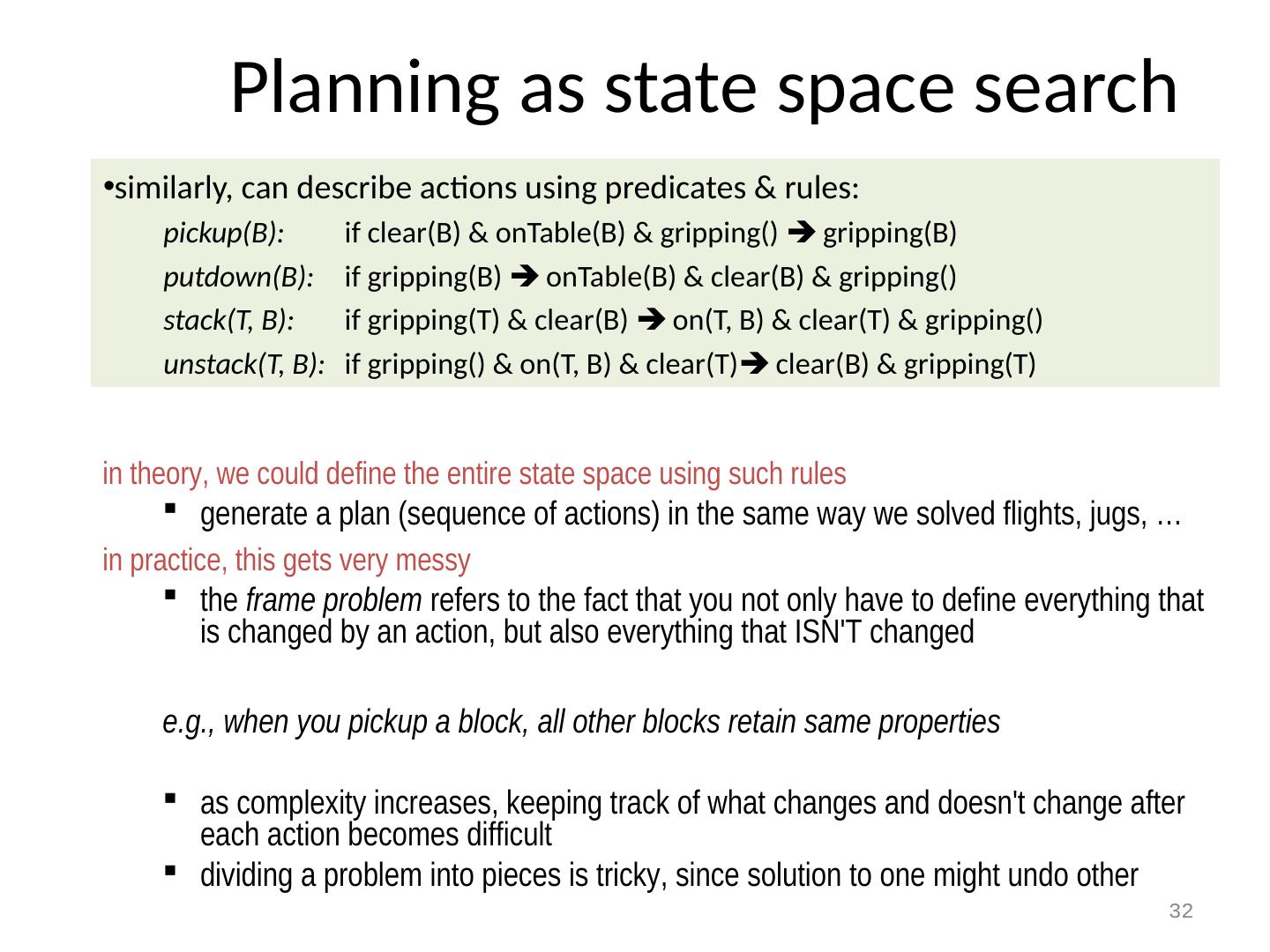

My goal in this project is to define rules that would make it possible to execute the following query: The other file contains my implementation to flag the suspicious posts. The first file containing facts about a clients interaction with the social network (web-scrapped). I implemented a network sanitizer as two Prolog knowledge bases, described in two files. Using your program, you can identify your clients questionable postings, then your client can examine these posting to see if they need to be deleted before an interview. You want to provide a service to your clients to sanitize their questionable postings in preparation for important job interviews. Your clients are posting questionable things on their social media, which is resulting in them in failing job interviews.

#Block world problem in prolog how to
Now, I’ll talk more about how to use Prolog to solve a real-world example and I’ll share my insight on my development experience🌍 When finding a match of a head of a clause and the goal, the clause is chosen and Prolog attempts to prove the goals in the body. Prolog matches patterns of a query goal with the patterns of the program.

In Prolog, most clause statements have both a declarative reading method. variable - a sequence of letters and digits that begin with a capital letter.atom - a sequence of letters and digits that begin with a lowercase letter.Prolog is intended as a declarative programming language, which means the program is made up of facts and rules. In Prolog, a program consists of one or more predicates, where each predicate consists of one or more clauses. Before I get into the details and insight I gained while implementing a solution to implementing a network sanitizer, I’m going to give you a refresher on Prolog💡īeing a logic language, we have to think differently about developing programs.


 0 kommentar(er)
0 kommentar(er)
